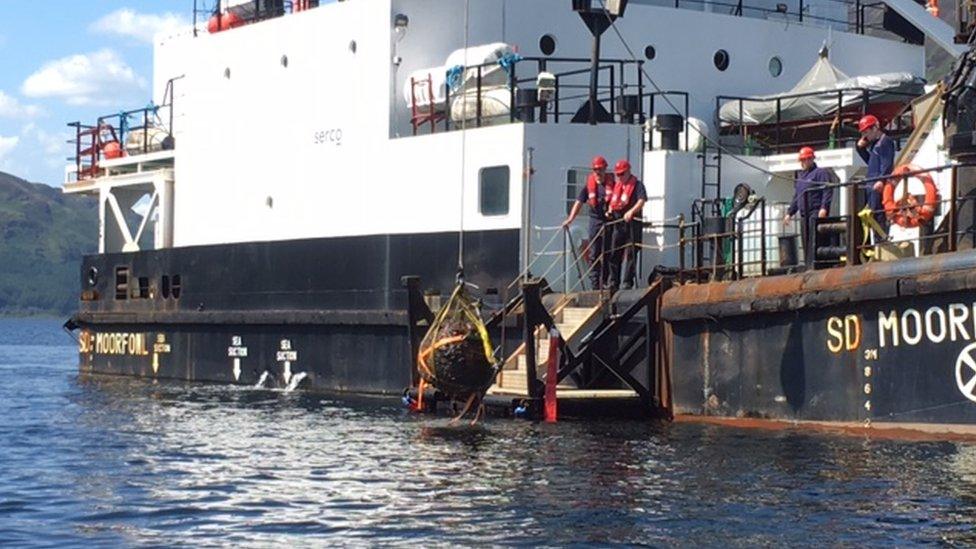Divers recover World War Two Highball bomb from Loch Striven
- Published

A team of divers have recovered a historic Highball bouncing bomb from a loch in Argyll.
More than 200 of the spherical bombs were tested at Loch Striven during World War Two but were never used.
Members of the British Sub-Aqua Club and the Royal Navy have successfully lifted one of them, and hope to recover at least one more of the devices.
They will go on show at the Brooklands Museum in Surrey and the de Havilland Aircraft Museum in Hertfordshire.
The prototype bombs, which were never used operationally, do not contain any explosives.
Highball was the military codename for the weapons, a naval version of the "Upkeep" bouncing bombs used in the Dambusters raid in May 1943.
It was one of five bombs developed by Sir Barnes Wallis and was designed to be used against ships.

Divers recover World War Two Highball bomb from Loch Striven
Iain Murray, a trustee of the Barnes Wallis Foundation, told the BBC: "The main purpose of developing Highball was to attack the battleship Tirpitz which was moored in the Norwegian fjords.
"Unfortunately it was located in an awkward position so it was difficult to attack using Highball and it was ultimately attacked using midget submarines.
"Subsequently the Highball squadron moved to the Pacific with the intention of attacking Japanese warships, but the war came to an end before that could actually happen."
The bombs will be sent to the two English aviation museums after conservation, completing the full set of Barnes Wallis bouncing bombs on public display.
Divers have been working for about seven years to devise a salvage plan since first surveying the loch. They have been helped by the Royal Navy, which is providing a ship and a crane for the operation.

The bombs were tested on Loch Striven during World War Two
The British Sub-Aqua Club has sent divers from Cheshire, Tyneside, Dundee, Cannock, London and Swindon.
Lindsay Brown, a member of the Dundee Sub-Aqua Club who is taking part in the salvage operation, said: "They're of an an age, of a technological innovation, that we'll possibly never see again.
"I feel that it shouldn't just be divers that are allowed to see these objects so I'm really glad that we're bringing a couple up so that other people have the chance to see part of our brilliant history."